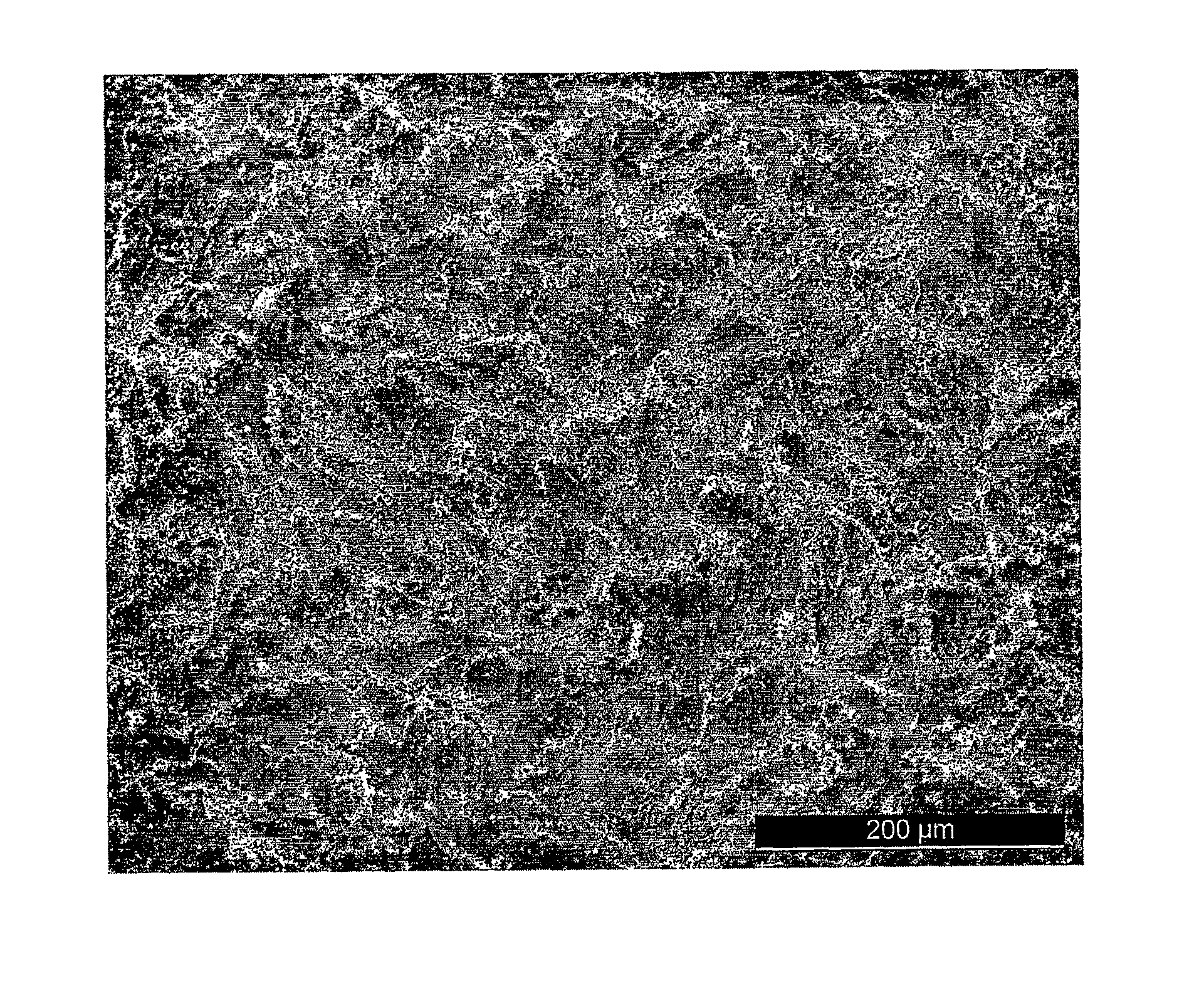Method for the production of a dental implant
a technology of dental implants and production methods, applied in the field of implants, can solve the problems of not eliminating the possibility of additional post-treatment treatmen
- Summary
- Abstract
- Description
- Claims
- Application Information
AI Technical Summary
Benefits of technology
Problems solved by technology
Method used
Image
Examples
example 1
[0086]A green body in the form of a cylindrical dental implant with a length of 10 mm and a diameter of 4 mm was injection molded from yttrium-stabilized zirconium oxide powder. After injection molding and prior to sintering, the surface was blasted with a mixture of peach- and apricot pits with a particle size of 100-150 μm with a pressure of 0.8 bar for 50 s. The resulting surface was examined by scanning electron microscopy. The surface topography created by the blasting is shown in different resolutions in FIGS. 1, 2, and 3. The macro-roughness thereby produced leads to a good osseointegration of the implant after sintering.
example 2
[0087]A green body in the form of a cylindrical dental implant with a length of 10 mm and a diameter of 4 mm was injection molded from yttrium-stabilized zirconium oxide powder. After the injection molding and prior to sintering, the surface was blasted with aluminium oxide with a particle size of about 250 μm with a pressure of 0.8 bar for 50 s. The resulting surface was examined by scanning electron microscopy. The surface topography created by the blasting is shown in different resolutions in FIGS. 4, 5, and 6. The macro-roughness thereby produced leads to a good osseointegration of the implant after sintering.
Series 2
[0088]In a second series of experiments, the green bodies were treated prior to sintering by the use of a blasting agent, which contained two different materials with different particle sizes. Therein, generally the following process management and settings of the parameters are preferred:
[0089]Preferred Parameters:
[0090]1. passage with ⅔ vol. organic material (peac...
example 3
[0101]A green body in the form of a cylindrical dental implant with a length of 10 mm and a diameter of 4 mm was injection molded from yttrium-stabilized zirconium oxide powder. After the injection molding and prior to sintering, the surface was blasted with a mixture of peach- and apricot pits ⅔ vol. (organic agent) 0.3 to 0.6 mm particle size and ⅓ vol. Al2O3-220 mesh with a pressure of 3.0 bar for 45 s.
[0102]Subsequently, 2. blasting passage with Al2O3 mesh 220, thereby more rough residues of the organic agent can be removed, with a pressure of 0.8 bar for 50 s.
[0103]The resulting surface was examined by scanning electron microscopy. The surface topography created by the blasting is shown in different resolutions in FIG. 7 (a-c). The macro-roughness thereby produced leads to a good osseointegration of the implant after sintering.
[0104]The values of the roughness measurements of the surface of the implant thus produced in the state prior to etching, measured at the threaded base, ...
PUM
| Property | Measurement | Unit |
|---|---|---|
| temperatures | aaaaa | aaaaa |
| diameter | aaaaa | aaaaa |
| bore diameter | aaaaa | aaaaa |
Abstract
Description
Claims
Application Information
 Login to View More
Login to View More - R&D
- Intellectual Property
- Life Sciences
- Materials
- Tech Scout
- Unparalleled Data Quality
- Higher Quality Content
- 60% Fewer Hallucinations
Browse by: Latest US Patents, China's latest patents, Technical Efficacy Thesaurus, Application Domain, Technology Topic, Popular Technical Reports.
© 2025 PatSnap. All rights reserved.Legal|Privacy policy|Modern Slavery Act Transparency Statement|Sitemap|About US| Contact US: help@patsnap.com



